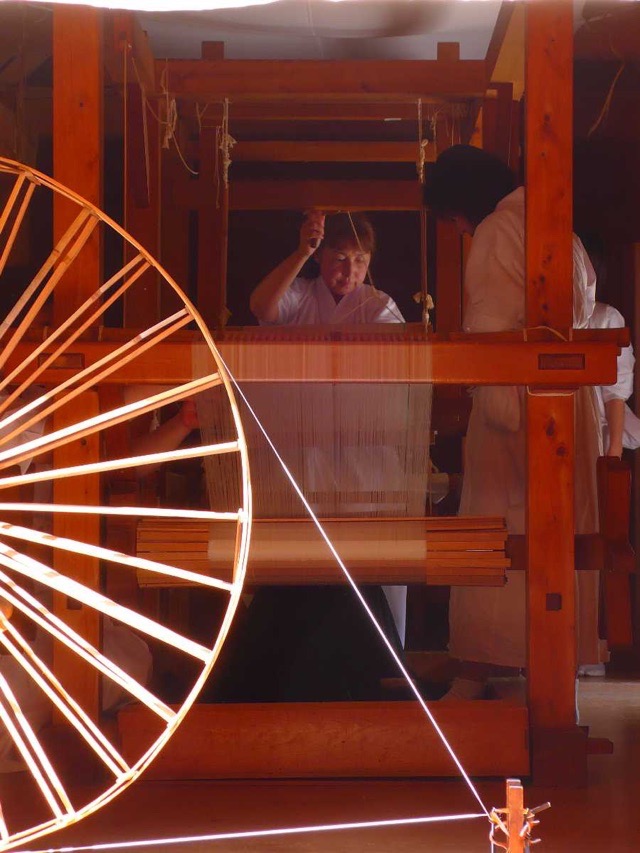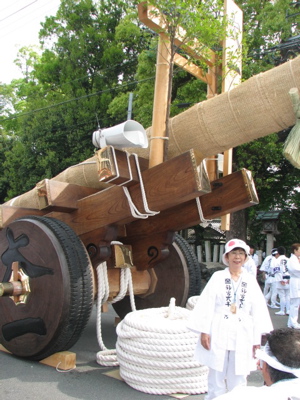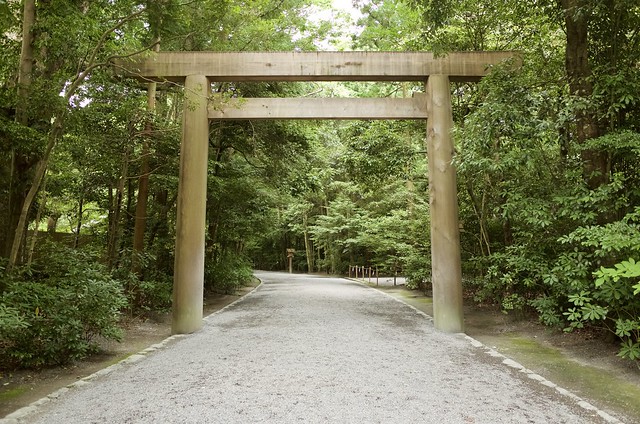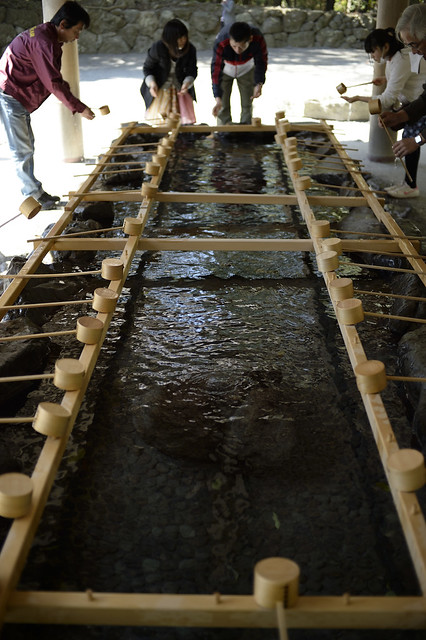
HONORING IMPERMANENCE
One of the wisest thoughts I’ve ever encountered about impermanence is this one from English writer W. Somerset Maugham’s novel, THE RAZOR’S EDGE:
“Nothing in the world is permanent, and we’re foolish when we ask anything to last, but surely we’re still more foolish not to take delight in it while we have it.”
It reminds me of a Hawaiian aesthetic that holds that beauty is made more precious when we understand that it is ephemeral and will not last.
The world changes and changes and, if we are wise, we will drink in whatever beauty we find and enjoy it while it is still with us.
Delighting in the beauty that we encounter and not begrudging the limited time it can stay, is the only response that makes sense in this world of change, Hawaiians say.
The glory of rainbows must surely be affected by our understanding that they do not linger on and on. They come. They glow. They fade away.

This tubular, five-petaled wonder has a strong, unique fragrance that lingers as (in one day’s time) a strand of the flowers slowly morphs from being an exquisite creamy whiteness to a vibrant golden orange before becoming a collection of brown straggling bits.

Always, the eruption of one of our volcanoes is a dramatic reminder that change happens and the display of destruction and creation can be very beautiful.
All of these likely Hawaiian examples of impermanence are taken from nature, but in Japan — another island kingdom across the Pacific — honoring the beauty of impermanence, process, and regeneration takes a more human turn.
ANOTHER PEOPLE’S WAY OF HONORING IMPERMANENCE
For 1300 years and more, the Japanese people in the city of Ise and the surrounding areas in the Mie prefecture have carried on a tradition of cyclical reconstruction and deconstruction.
Every 20 years or so the people connected to the place rebuild two of the holiest of their holy buildings as well as a number of other structures that comprise the Shinto Ise Jingū or Grand Shrine.
The rebuilders use Hinoki cypress wood — some from trees that are over 400 years old with trunks that are 4.5 feet (1.4 meters) in diameter — taken from ancient mountain forests that surround the area.
The cultivated trees are planted, maintained, earmarked and harvested on a cycle that spans hundreds of years in order to provide material for the great work.
This short 2019 YouTube video, “Ise Shrine/Ise Jingu,” which features a tour of the shrine complex was uploaded by travel vlogger Charlie Casia. The serene beauty of the complex shines.
The two main shrines in the complex are the Gekū (Outer Shrine) and Naikū (Inner Shrine). They are separated from each other by about four miles (6 kilometers) of forested land. More than 120 smaller shrines and sanctuaries have sprung up around them as well.
The main shrines were originally built from wood harvested from the same forest that surrounds the latest iterations now.
These days, the local Hinoki wood is not as abundant as it once was so the shrine rebuilders have come to depend on other domestic producers who insure that only the very best wood is used for the work.
Logs are obtained from the mountains and floated down the rivers flowing past Ise.
Once the logs are harvested, they are put through a lengthy seasoning and drying process during which they spend several years in a pond before being dried and prepared as building material.
Timber for Gekū is landed from the Miya River while that for Naikū is landed from the Isuzu river.
No nails are used in the shrine construction. The master artisans who erect these buildings use an ancient post-and-lintel technique with intricately cut and fitted joints that are designed and carved to fit together like puzzle pieces.
My favorite YouTube video about the miyadaiku carpenters of Japan is this one, published in 2019 by a Great Big Story.
It is titled, “In Japan, Repairing Buildings Without a Single Nail” and features Takahiro Matsumoto, a miyadaiku from Kamakura, Japan who assesses and repairs damaged temples in his own city. It shows the kind of work these master craftsmen do.
A 100-meter long (longer than a football field) wooden bridge that spans the Isuzu River at the entrance of the Naikū shrine is rebuilt as well.
It’s actually a part of the training process.
The bridge is a journeyman project for the traditional miyadaiku temple builders — craftsmen and artisans who will, if they become masters, be entrusted with the next rebuilding of the main shrines.

(The next scheduled rebuilding of Naikū, which is deeply connected to the Japanese imperial family, is scheduled to occur in 2033 on the lower, northern site.)
Other shrines in the complex are also included in the rebuilding project.
While the people at Ise Jingū are not the only ones to practice this kind of rebuilding, these structures are the only ones that have been consistently rebuilt through the many centuries of their existence.
Besides the builders and carpenters involved in the building, scores of other craftspeople prepare thatch for the roofs using traditional techniques, cut the gold sheets that make certain of the ridge poles shimmer in the sun, weave the cloth used for hangings, and attend to the myriad details that go into making the newest shrine incarnation real.

The local people in the surrounding areas are often deeply involved in the process, participating in various traditional events as well as a number of festivals that also include the millions of pilgrims and tourists who visit the Grand Shrine complex every year.
There’s a special festival when some of the logs and timber that will be used in the rebuilding are moved onto the site with help from many willing arms and backs.

The pebbles in the courtyard surrounding the newly built shrine are gathered, washed, then moved to the site and placed there by respectful human hands in a two-month process that involves the residents and visitors to the area.
(Afterwards the pebbles from the old structure are returned to the river. One day they may be returned again to the site.)
The entire reconstruction process ideally takes about 17 years, with the initial years focused on project organization, general planning and fundraising, and the last eight years concentrated on the actual physical construction of the buildings.
Ritual and celebrations orchestrated by the Shinto priesthood is generously mixed in throughout the whole process and the people come to help and to participate in and watch the spectacle slowly unfold.
About six months after each new shrine building is completed and the sacred objects housed in the old shrine are ceremonially transferred to the new one, the old shrine is disassembled.
Some parts of the old shrine are kept for use in the next rebuilding effort.
The old major shrine’s two massive main pillars are repurposed to make the enormous torii gate that greets the multitudes of pilgrims and other visitors to the shrine complex.

And still other bits will become part of Ise amulets that are then sold throughout Japan to be placed on household altars – in Japan and almost certainly in other parts of the world as well.
The thing about the Ise Grand Shrine rebuilding is that it continues, rippling through the world in ever-widening circles.
MORE THAN JUST A HUGE CONSTRUCTION PROJECT
Each rebuild costs about half a billion US dollars (of which at least half are paid for by Japanese tax payers).
Every rebuild requires about 10,000 to 12,000 old cedar trees, many of them grown and harvested from areas outside Ise, and all of them expensive.
It is a costly proposition, keeping the culture alive.
However, it is worth noting that the Ise Grand Shrine rebuilding is an ages-old, ecologically sustainable practice that provides a structure and a framework for renewing a deep national commitment to an ancient spiritual and creative tradition.
This tradition brings together large numbers of like-minded individuals as well as those bound to the place through all the generations of families who have been a part of the ongoing project.
How much is an affirmation of Life-Its-Own-Self really worth?
NOT A UNESCO WORLD HERITAGE SITE
As I’ve said, the rebuilding of the Ise Grand Shrine is all about honoring impermanence, process and regeneration.
Maybe that’s one reason why these holiest of holy buildings in a country that is full of them – buildings that have occupied their current sites for more than 1300 years – have not made it onto the UNESCO list of World Heritage Sites.
The United Nations Educational, Scientific and Cultural Organization (UNESCO) began their famous list of sites that are judged to be “important to the common culture and heritage of humanity” in 1972.
These sites, they say, have cultural, historic, geographical or some other unique feature that make them worthy of protection from harm.
Some of these UNESCO sites are considered to be places where humans made great strides in advancing technology or intellectual and spiritual thinking.
The UNESCO list and the preservation program connected to it, it is said, is one of the most widely acknowledged international agreements.
The sites on the list are very popular with world travelers and tourists as well.
[Click the button below for the latest iteration of the UNESCO World Heritage Sites list.]
There are currently almost 1,200 sites on the list. Twenty-three of them are in Japan.
You will notice, however, that Ise Jingū, the Shinto “Grand Shrine” complex which is not only historically connected to the imperial family of Japan but is also a justly famous pilgrimage site, is not on the list.

The priests say they do this because the shrines are a part of an ongoing, living tradition that continues still.
That reminds me of one old Hawaiian friend who once pointed out, “Preservation is not the same as perpetuation. Preservation is what you do to make pickles. When you perpetuate something, you are helping to keep it alive.”
Through the centuries of practicing this form of reverencing life and caring for the sacred within the world, the living tradition evolves, passing through the hands, hearts and minds of many people, and yet it remains the same.

TIME
Time.
Time flows,
Eddying here,
Slowing there,
Rushing on and tripping
Over rocks and logs,
Half-seen in the depths
Of the river that
Flows on and winds
Past cities, towns and wild places,
Moving on and through
And in and out
Of the mind’s panoramic landscape,
Moving on and always
Moving forward, never back,
Carrying memory and recall
Into the future.
Time flows.
Time.
By Netta Kanoho
Header photo credit: “Ise” by Bong Grit via Flickr [CC By-NC-ND 2.0]
……
SOME OTHER POSTS TO EXPLORE:
(Click on each of the post titles below and see where it takes you…)
……
Thanks for your visit. I’d appreciate it if you would drop a note or comment below and tell me your thoughts.
20 thoughts on “HONORING IMPERMANENCE”
As always, another beautifully written poem on the life and culture of humanity. Impermanence is truly honored as presented through the post here concerning the Ise Jingu shrine and many others that you have mentioned to which all linking to the shrine. It’s such a pure magical haven. Considering the amount invested to keep the tradition going, I will say that’s just simply awesome. And the poem about time which you used in closing the post makes it excellent altogether. I would really love to have an exploration of this site one day.
Thanks for the visit and for sharing your thoughts, RoDarrick. I do appreciate it.
And I’d be really pleased if you would explore the site more. Us humans are amazing creatures, I say. We do some really cool things.
Please do come again….
Good Morning Netta,
Enjoy it when you have it as things may change from one day to the other.
The Pua Kenikeni flower, so lovely but too short is the time one can enjoy its beauty.
On my patio, I have The Lady of the Night, a cactus with snake like arms. I got a couple of small pieces while visiting my friend in Germany in 2010. Her plant was 30 years at that time. Here in the south of Spain the Lady of the Night likes the temperature and grows really well. Now is the time of the year that she produces big, trumpet-like flowers which open at sunset and are gone the next morning.
That was an impressive video of the Kilauea, the force of nature is awesome.
The Ise Shrine complex in Japan shows a great contrast with our hectic modern world. What a beautiful place. It was so interesting to read how and why this rebuilding has taken place during so many centuries.
Thank you, Netta, for this lovely trip I made by reading your post.
Taetske, I do thank you for your visit and for sharing your thoughts. I am so glad you enjoyed the post. I have to confess that I was being a bit self-indulgent when I wrote the thing. Beauty is always a joy to share with others.
The pua kenikeni is my favorite flower…just because it is so intense and it lasts for such a short time. I used to love when an old friend would stop by my office with a lei that his wife made for me of the flowers when they were in bloom.
They are gone now, both of my old friends, after having lived long and joyful lives. I have a pua kenikeni bush in my yard and when it blooms I think of them and smile.
Your Lady of the Night sounds like what we call night-blooming cereus. You are right. Those are spectacular flowers and they truly are magnificent. Another friend has a stone wall covered with the plant. When it blooms…oh, my!
You know, those who do not live here often wonder why people would even WANT to live in the middle of a lava field on top of an active volcano, risking the chance of losing everything in a flood of fire and molten rock. Maybe the beauty and the energy you see in the video helps to answer that question some.
In my family, we call the Hawaiian fire goddess Pele “Tutu” (Grandma). When Tutu dances, she moves your heart. The rest is only stuff.
It was a wonderment for me to discover the story of the Ise Grand Shrine. Us humans can be very good at making beauty and making connections, I say.
Please do come again….
Hi! Thanks for sharing this quote from W. Somerset Maugham’s novel. It’s so easy to get attached to things. And even though we know in the back of our mind that they’re only temporal, we still struggle to view them as they really are: just here for a season.
I really enjoyed the clip of Hawaii’s lava flow. Thank you very much!
Thanks for the visit and for sharing your thoughts, Henry. I do appreciate it.
Please do come again.
Netta , I have to say first I love the poem on time, it really sums up your article here on Impermanence. It si so easy to take parts of nature, and the beautiful sights we see everyday for granted; not realizing that one day it will be gone. We should appreciate the beauty we see around us now and respect nature’s destruction as perhaps a sign for a new beginning. You speak often of Hawaiian lore and sayings, are you from Hawaii? Again really do love the poem on Time.
Robert
Thanks for the visit and for sharing your thoughts, Robert.
I have been blessed to be born and raised in Hawaii. It tends to color the way I think and write. Thanks for asking….
Please do come again.
Nothing in the world is permanent … that is true, and yet, we often hope that certain things last, love, relationships, and other things, but when we understand that something is ephemeral and will not last, we will appreciate and value it more, even enjoy it more.
The reconstruction in the Japanese city of Ise is a wonder in itself. I have not heard of it before, but it’s fascinating, and now I want to go and see it for myself. What a beautiful example of impermanence. Renewal through nature’s resources. It’s amazing how long it takes and how they prepare the wood for this construction, that not a single nail is used, but that the wooden pieces fit like a puzzle. That is something I would love to witness.
I love your poem about time. “Moving on, and always moving forward, never back”. It sounds fatal and it reminds me that time is fleeting, and we should cherish every moment that is given to us, for life is made of moments, each moment ends and then begins a new moment.
Christine, thanks for the visit and for sharing your thoughts. I am so glad you enjoyed the post.
I hope you do get a chance to see the rebuilding of Ise shrine (or one of the other lesser shrines in Japan). You are right. It must be amazing.
Please do come again.
Hello Netta, thank you for sharing this article and your beautiful poem that is always on point.
Of course, nothing in this life is permanent. If we understand this, we’d enjoy stuffs while they last and will not be too surprised when we eventually lost access to them. Nothing in this world last forever. Everything fades away as time progresses. Impermanence exists with time.
Those are truly beautiful clips especially the first one.
Thanks for the visit and for sharing your thoughts, MrB…. I do appreciate it.
Please do come again….
First of all, enjoyed your poem.. from what I can tell it’s that time waits for no man, and will keep flowing forward. However in the process, we must slow down and appreciate the things around us because nothing is built to last. Everything will be replaced eventually.
In any case, I definitely learnt a lot about Japan’s culture with this article too. Definitely want to visit a shrine in the future too when I visit Japan. Really love to visit scenic places so that’s a plus for me!
Also, thanks for the reminder that we should appreciate the things around out, especially the beauty and the wonders of the world. Some times definitely won’t last forever.
Terence, thank you for your visit and for sharing your thoughts. I am pleased the post (and the poem) was of interest to you.
Please do come again.
Hello there, I want to say a big thanks for you there’s article on honoring impermanence. I love your poem about time. “Moving on, and always moving forward, never back”.
There is nothing here in this Earth that lasts forever. If we really come to the agreement of this amazing reality that with time everything will fade off, we’ll then have more reason to always appreciate every little moment we have. Impermanence indeed exists within us.
Sheddy, thank you for your visit and for sharing your thoughts. I do appreciate it.
Please come again.
Hello there
Thank you for sharing this beautiful post.
“Nothing in the world is permanent, and we’re foolish when we ask anything to last, but surely we’re still more foolish not to take delight in it while we have it.” This world is not our home and that’s why we cannot expect things to last forever. There is the beginning and an end for real.
The world and everything in it will always keep changing and nothing can change THAT. Sometimes it makes sense for us to enjoy whatever we have while still on earth because soon it and we will not be there.
Paul, thank you for the visit and for sharing your thoughts. I do appreciate it.
Please come again.
Recently I came across an article that asked if we weren’t the first advanced civilization on Earth, but that the previous ones were just really, really old? Archeologists can find many clues to our history, but over extremely long time scales (millions of years), almost all evidence is destined to disappear.
It’s kind of a scary and comforting thought at the same time.
True, dat! Thanks for the visit and for sharing your thoughts, Aly. Native and indigenous thinkers and all the old wise guys tell us that we are definitely not the first high civilization on this old planet.
Myself, I think that is very cool. No matter what, the earth is still here.
Please do come again.